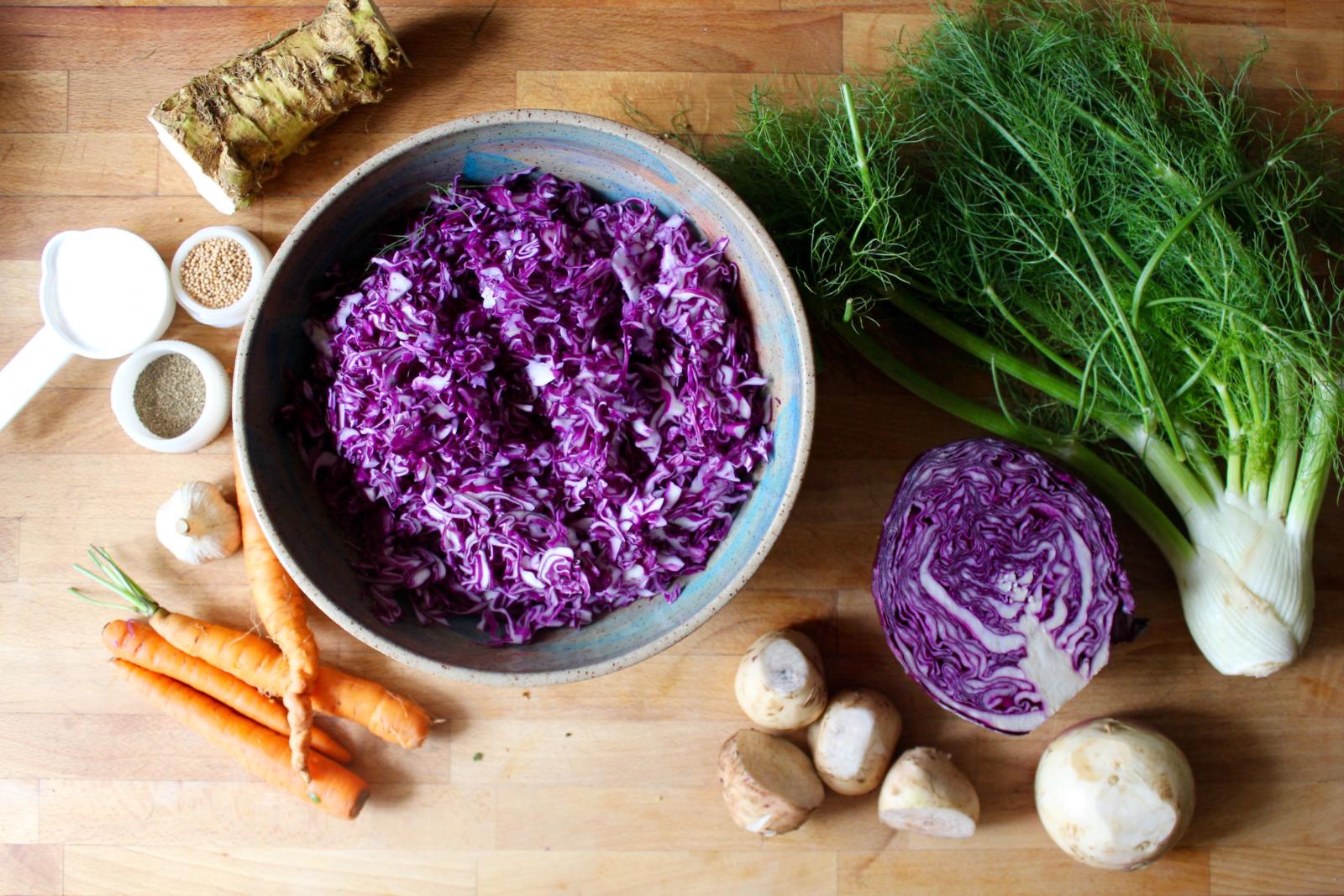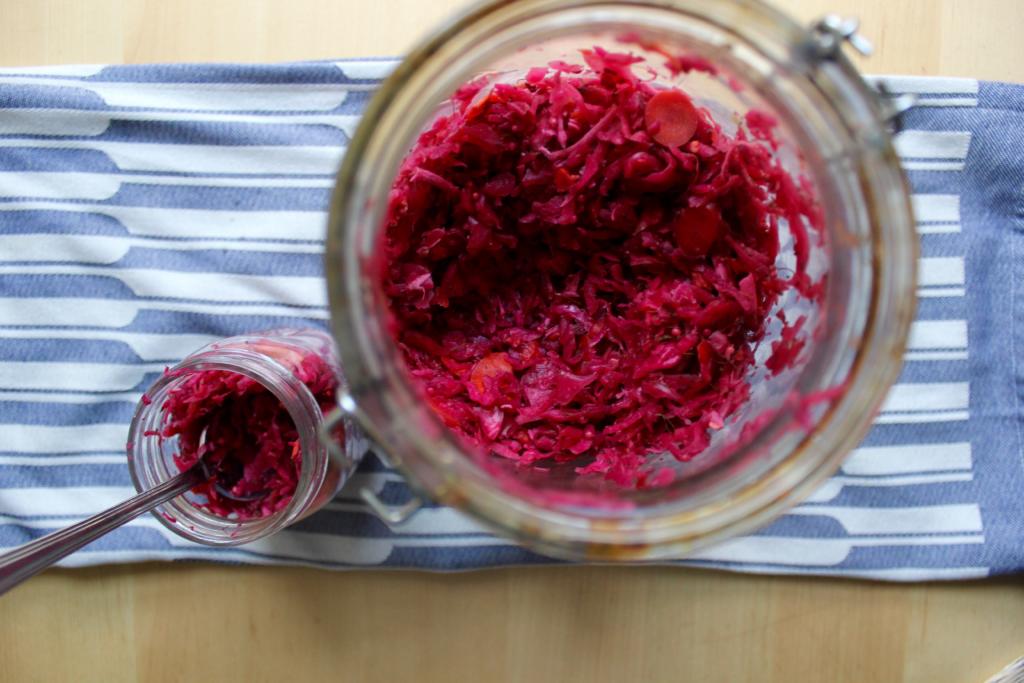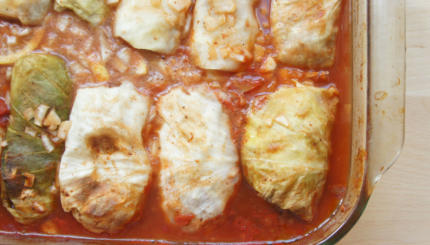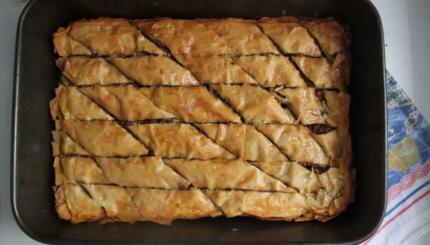There are sweet-tooths, there are meat-tooths, and there are sour-tooths. I’m definitely the latter. I like the way that fermented foods, like pickles, kombucha, sauerkraut, and kimchi, wake up your tastebuds with a satisfying, pungent crunch. They’re salty, sour, and full of healthy bacteria–what’s not to love?
The history of sauerkraut goes back 2000 years to China, where they pickled cabbage and other vegetables in rice wine. The troops of Gehghis Khan brought this technique of food preservation to Europe around 1000 years ago, where it became an instant hit. Instead of fermenting the cabbage in rice wine, Germans dry-cured it with salt, which draws out its liquid.
This method of fermenting, called lacto-fermentation, is versatile. German and Eastern European Jews prepared several different sour, fermented foods like sauerkraut, including pickled cabbage, pickled beets, pickled horseradish, and even pickled beef tongue.
If you don’t have time for the typical 5-10 days of fermentation, you can whip up vinegar-brined quick pickles in a moment’s notice. If you’re looking for that classic New York “full sour” pickle, you’ll want to make a salt brine, like our classic kosher dill pickles recipe. Those are the kinds of pickled foods that are most flavorful, and full of beneficial bacteria.
There are lots of different variations of vegetables, herbs and spices, and even fruits that you can add to sauerkraut–it’s hard to go wrong! My recipe often depends on what looks good at the farmer’s market.
Final product, after 6 days of fermenting.
Ingredients
1 medium purple cabbage
5 carrots, grated
3-inch piece of fresh horseradish root, grated
3 small to medium turnips, grated
cloves of 1 head of garlic, minced
1 bulb of fennel, sliced thinly
1 Tbsp carraway seeds
1 tsp celery seeds
2 tsp fennel seeds
1 tsp mustard seeds
1 tsp red chili flakes (optional)
scant 1/4 cup sea salt
Directions
Clean the vegetables, making sure they’re free of dirt. Remove any tough outer leaves from cabbage and set aside for another use, or compost them.
Slice the cabbage head in half lengthwise, so that stem keeps each half together. Shred each half into quarter-inch shreds, either by chopping, using your shredder attachment to your food processor, or with a mandoline. Put cabbage into a large pot or bowl, and continue to grate the rest of the vegetables. Add those to the bowl as well.
Next, mix your spices and salt together. Add those to the bowl (see photo, above). Massage the shredded vegetables vigorously with your fingers, making sure that the produce is evenly coated with the salt and seeds. You’re breaking down the cell walls in this step, encouraging the vegetables to release their water. Mix and massage until the cabbage softens.
Next, pack the vegetables into a large glass jar, or several small ones. Pour any residual liquid from the mixing bowl into the jar of cabbage. Leave at least 2 inches of space at the top of the jar. If you have a lot of extra space at the top of your jar, you may wish to weigh it down with a smaller mason jar filled with water or stones, as illustrated by The Kitchn.
There should be enough brine to completely cover the contents when weighed down. If not, dissolve 1 tsp of salt in 1 cup of water and pour over the vegetables. The liquid prevents mold from growing.
Cover the lid of your jar with a light cloth (like a dishtowel) and secure it with a rubber band around the lid, allowing your sauerkraut to breathe but preventing pests from invading. Let it sit in a cool, dark place for 4-10 days. You can check on it and taste it along the way. If it’s to your liking, it’s done–there’s no danger in letting it sit for a briefer or longer period of time. Store in jars, covered tightly, for several months.





